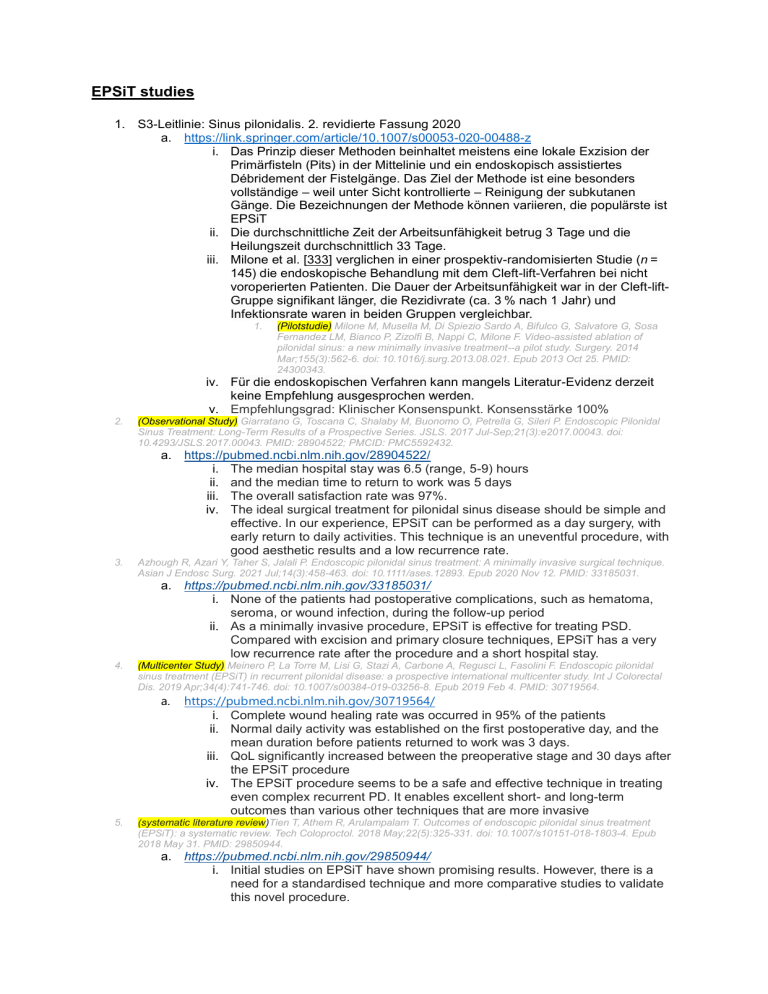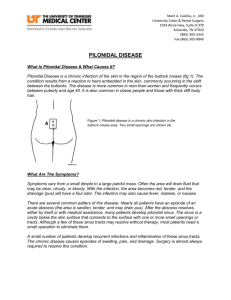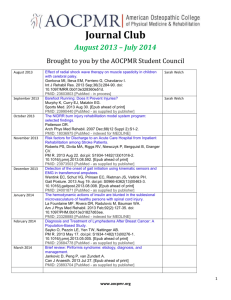
EPSiT studies 1. S3-Leitlinie: Sinus pilonidalis. 2. revidierte Fassung 2020 a. https://link.springer.com/article/10.1007/s00053-020-00488-z i. Das Prinzip dieser Methoden beinhaltet meistens eine lokale Exzision der Primärfisteln (Pits) in der Mittelinie und ein endoskopisch assistiertes Débridement der Fistelgänge. Das Ziel der Methode ist eine besonders vollständige – weil unter Sicht kontrollierte – Reinigung der subkutanen Gänge. Die Bezeichnungen der Methode können variieren, die populärste ist EPSiT ii. Die durchschnittliche Zeit der Arbeitsunfähigkeit betrug 3 Tage und die Heilungszeit durchschnittlich 33 Tage. iii. Milone et al. [333] verglichen in einer prospektiv-randomisierten Studie (n = 145) die endoskopische Behandlung mit dem Cleft-lift-Verfahren bei nicht voroperierten Patienten. Die Dauer der Arbeitsunfähigkeit war in der Cleft-liftGruppe signifikant länger, die Rezidivrate (ca. 3 % nach 1 Jahr) und Infektionsrate waren in beiden Gruppen vergleichbar. 1. (Pilotstudie) Milone M, Musella M, Di Spiezio Sardo A, Bifulco G, Salvatore G, Sosa Fernandez LM, Bianco P, Zizolfi B, Nappi C, Milone F. Video-assisted ablation of pilonidal sinus: a new minimally invasive treatment--a pilot study. Surgery. 2014 Mar;155(3):562-6. doi: 10.1016/j.surg.2013.08.021. Epub 2013 Oct 25. PMID: 24300343. iv. Für die endoskopischen Verfahren kann mangels Literatur-Evidenz derzeit keine Empfehlung ausgesprochen werden. v. Empfehlungsgrad: Klinischer Konsenspunkt. Konsensstärke 100% 2. (Observational Study) Giarratano G, Toscana C, Shalaby M, Buonomo O, Petrella G, Sileri P. Endoscopic Pilonidal Sinus Treatment: Long-Term Results of a Prospective Series. JSLS. 2017 Jul-Sep;21(3):e2017.00043. doi: 10.4293/JSLS.2017.00043. PMID: 28904522; PMCID: PMC5592432. a. https://pubmed.ncbi.nlm.nih.gov/28904522/ i. The median hospital stay was 6.5 (range, 5-9) hours ii. and the median time to return to work was 5 days iii. The overall satisfaction rate was 97%. iv. The ideal surgical treatment for pilonidal sinus disease should be simple and effective. In our experience, EPSiT can be performed as a day surgery, with early return to daily activities. This technique is an uneventful procedure, with good aesthetic results and a low recurrence rate. 3. Azhough R, Azari Y, Taher S, Jalali P. Endoscopic pilonidal sinus treatment: A minimally invasive surgical technique. Asian J Endosc Surg. 2021 Jul;14(3):458-463. doi: 10.1111/ases.12893. Epub 2020 Nov 12. PMID: 33185031. a. https://pubmed.ncbi.nlm.nih.gov/33185031/ i. None of the patients had postoperative complications, such as hematoma, seroma, or wound infection, during the follow-up period ii. As a minimally invasive procedure, EPSiT is effective for treating PSD. Compared with excision and primary closure techniques, EPSiT has a very low recurrence rate after the procedure and a short hospital stay. 4. (Multicenter Study) Meinero P, La Torre M, Lisi G, Stazi A, Carbone A, Regusci L, Fasolini F. Endoscopic pilonidal sinus treatment (EPSiT) in recurrent pilonidal disease: a prospective international multicenter study. Int J Colorectal Dis. 2019 Apr;34(4):741-746. doi: 10.1007/s00384-019-03256-8. Epub 2019 Feb 4. PMID: 30719564. a. 5. https://pubmed.ncbi.nlm.nih.gov/30719564/ i. Complete wound healing rate was occurred in 95% of the patients ii. Normal daily activity was established on the first postoperative day, and the mean duration before patients returned to work was 3 days. iii. QoL significantly increased between the preoperative stage and 30 days after the EPSiT procedure iv. The EPSiT procedure seems to be a safe and effective technique in treating even complex recurrent PD. It enables excellent short- and long-term outcomes than various other techniques that are more invasive (systematic literature review)Tien T, Athem R, Arulampalam T. Outcomes of endoscopic pilonidal sinus treatment (EPSiT): a systematic review. Tech Coloproctol. 2018 May;22(5):325-331. doi: 10.1007/s10151-018-1803-4. Epub 2018 May 31. PMID: 29850944. a. https://pubmed.ncbi.nlm.nih.gov/29850944/ i. Initial studies on EPSiT have shown promising results. However, there is a need for a standardised technique and more comparative studies to validate this novel procedure. 6. (retrospective single-center analysis) Foti N, Passannanti D, Libia A, Campanile FC. A minimally invasive approach to pilonidal disease with endoscopic pilonidal sinus treatment (EPSiT): a single-center case series with long-term results. Tech Coloproctol. 2021 Sep;25(9):1045-1054. doi: 10.1007/s10151-021-02477-w. Epub 2021 Jun 10. PMID: 34110535. a. https://pubmed.ncbi.nlm.nih.gov/34110535/ i. the median operative time was 32.5 (IQR 18.75) minutes, the median pain score (visual analog scale) in week 1 was 2 (IQR 2), and the median time off work was 4 (IQR 2) ii. In our experience, EPSiT is safe, well accepted. and associated with a low level of postoperative pain, short hospitalization, short time off work, as well as optimal cosmetic results. Its failure rate is similar to that of excisional surgery.

